 Dr. Bao-An Li conducts research in nuclear physics and astrophysics. The goal of his recent work is to understand properties of dense neutron-rich nuclear matter that can be produced in terrestrial nuclear reactions and may also exists in the core of neutron stars. The results of his work may help better understand the origin of elements and nature of matter under extreme conditions as well as the evolution of the Universe. His recent publications can be found here
Dr. Bao-An Li conducts research in nuclear physics and astrophysics. The goal of his recent work is to understand properties of dense neutron-rich nuclear matter that can be produced in terrestrial nuclear reactions and may also exists in the core of neutron stars. The results of his work may help better understand the origin of elements and nature of matter under extreme conditions as well as the evolution of the Universe. His recent publications can be found here
<http://xxx.lanl.gov/find/nucl-th/1/au:+Li_Bao_An/0/1/0/all/0/1>.
You can also get a feeling about the impact of his research by checking out the citations of his publications at Google Scholars
<http://scholar.google.com/scholar?q=Bao-an+Li&hl=en&lr=>
or at SPIRES.
<http://inspirehep.net/author/profile/B.A.Li.4>
Dr. Li’s research is currently funded by the National Science Foundation, NASA and the Texas Coordinating Board of Higher Education.
Abstract
Neutron stars are highly condensed stellar objects produced in supernova explosions, the end point in the evolution of more massive stars. The masses of neutron stars are in the range of 1-2 times of the sun, whereas their typical radii are only 10-20km. The matter they contain, primarily neutrons, is therefore the densest found outside black holes in the universe. Neutron stars thus provide a laboratory to test our understanding of nature at the extreme, and verify our theories of matter, energy and their interactions. However, neutron stars are still among the most mysterious objects in the universe and they pose a great scientific challenge. The structure and properties of neutron stars are determined by the Equation of State (which is a relationship among the pressure, density and temperature) of neutron-rich nuclear matter. For the EOS of neutron-rich nuclear matter, what has been most uncertain is the symmetry energy term related to the energy cost of converting protons into neutrons in nuclear medium at various densities. Nuclear reactions conducted in terrestrial laboratories, especially heavy-ion reactions induced by highly neutron-rich radioactive beams, can produce nuclear matter similar to those contained in neutron stars. In this talk, I will first review the latest theoretical and experimental progress in constraining the EOS of neutron-rich nuclear matter, especially the density dependence of the nuclear symmetry energy, using nuclear reactions in terrestrial laboratories. I will then discuss several key astrophysical ramifications of the EOS partially constrained by the latest experimental data from several nuclear physics laboratories around the world.
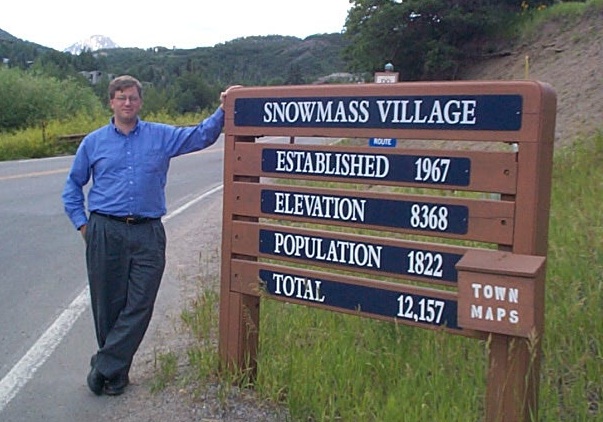 Professor Fredrick Olness received his B.S. from Duke University (1980), and his M.S. and Ph.D. from the University of Wisconsin (1982,1985). Continuing his work-across-America tour, he took postdocs at Illinois Institute of Technology in Chicago (1985-88) and the University of Oregon in Eugene (1988-91), before joining SMU in 1991 where he is now an Professor of Physics. He served as Department Chair from 2001-2007, and again from 2010 to present. In 2010 he was selected as the Dedman College distinguished Professor. Professor Olness currently serves as Co-Spokesperson of the CTEQ Collaboration (cteq.org). He spent the 1997-98 academic year on sabbatical with the Theoretical Physics Group at Fermi National Accelerator Laboratory, and the 2007-08 academic year on sabbatical working on the LHC (Large Hadron Collider) at the CERN (Conseil Européen pour la Recherche Nucléaire) laboratory in Geneva Switzerland. In 2005 Olness was elected as an APS Fellow for "For significant contributions to understanding nucleon structure and heavy quark production in perturbative quantum chromodynamics." Each year, no more than one-half of one percent of the then current membership of the Society are recognized by their peers for election to the status of Fellow in The American Physical Society. Prof. Olness served as President of the SMU Faculty Senate for 2009-2010. He received a SMU Ford Fellowship in 2008, the SMU "M" Award in 2007, the SMU Distinguished University Citizen Award in 2006, and the President's Associates Outstanding Faculty Award in 2000. He is also the Director of the Dallas Regional Science & Engineering Fair. His research is in elementary particle physics phenomenology, at the interface between theory and experiment. Specifically, he studies Quantum Chromodynamics (the fundamental force that binds nuclei) to help answer the questions: What are the fundamental building blocks of nature, and what holds them together? Fredrick initiated the DOE theory grant at SMU in 1992, was awarded an SSC Fellowship in 1993, and is an active member of the CTEQ collaboration--a novel collaboration of theorists and experimentalists. He has written over 100 research articles, served as a convener for international workshops and conferences, and has been an invited speaker for international conferences and summer schools. On the side, he presents "The Physics of Music" and "The Physics Circus" public lectures to local schools, and is the co-director of the Dallas Science Fair. Outside of physics, he entertains himself (and others) playing his trumpets for church services and weddings. More information about Prof. Olness and his research can be found at
Professor Fredrick Olness received his B.S. from Duke University (1980), and his M.S. and Ph.D. from the University of Wisconsin (1982,1985). Continuing his work-across-America tour, he took postdocs at Illinois Institute of Technology in Chicago (1985-88) and the University of Oregon in Eugene (1988-91), before joining SMU in 1991 where he is now an Professor of Physics. He served as Department Chair from 2001-2007, and again from 2010 to present. In 2010 he was selected as the Dedman College distinguished Professor. Professor Olness currently serves as Co-Spokesperson of the CTEQ Collaboration (cteq.org). He spent the 1997-98 academic year on sabbatical with the Theoretical Physics Group at Fermi National Accelerator Laboratory, and the 2007-08 academic year on sabbatical working on the LHC (Large Hadron Collider) at the CERN (Conseil Européen pour la Recherche Nucléaire) laboratory in Geneva Switzerland. In 2005 Olness was elected as an APS Fellow for "For significant contributions to understanding nucleon structure and heavy quark production in perturbative quantum chromodynamics." Each year, no more than one-half of one percent of the then current membership of the Society are recognized by their peers for election to the status of Fellow in The American Physical Society. Prof. Olness served as President of the SMU Faculty Senate for 2009-2010. He received a SMU Ford Fellowship in 2008, the SMU "M" Award in 2007, the SMU Distinguished University Citizen Award in 2006, and the President's Associates Outstanding Faculty Award in 2000. He is also the Director of the Dallas Regional Science & Engineering Fair. His research is in elementary particle physics phenomenology, at the interface between theory and experiment. Specifically, he studies Quantum Chromodynamics (the fundamental force that binds nuclei) to help answer the questions: What are the fundamental building blocks of nature, and what holds them together? Fredrick initiated the DOE theory grant at SMU in 1992, was awarded an SSC Fellowship in 1993, and is an active member of the CTEQ collaboration--a novel collaboration of theorists and experimentalists. He has written over 100 research articles, served as a convener for international workshops and conferences, and has been an invited speaker for international conferences and summer schools. On the side, he presents "The Physics of Music" and "The Physics Circus" public lectures to local schools, and is the co-director of the Dallas Science Fair. Outside of physics, he entertains himself (and others) playing his trumpets for church services and weddings. More information about Prof. Olness and his research can be found at
http://www.physics.smu.edu/~olness/www/index.html
NOTE: the picture above of Prof. Olness during a conference in 2001, shows an interesting (but dangerous) use of units.
Abstract:
Although we've been measuring the structure of the proton for decades, the strange-quark content of the proton (as well as the heavier c and b flavors) is relatively unconstrained. The broad kinematic reach of the Large Hadron Collider (LHC) increases the role of the s,c, & b components; this has important implications for the LHC "benchmark" processes such as W and Z boson production which are a crucial stepping stone to the Higgs discovery. We review the recent data as well as theoretical advances which are enable an enhanced analysis of the LHC data.
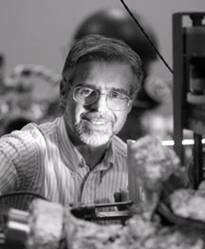 Yves Chabal holds a Texas Instrument Distinguished University Chair in Nanoelectronics at the University of Texas at Dallas. He obtained a BA in Physics from Princeton University in 1974, and a Ph.D. in Physics from Cornell University in 1980. He then joined Bell Laboratories where he developed sensitive spectroscopic methods to characterize surfaces and interfaces. He worked at Murray Hill, New Jersey, from 1980 until 2002 for AT&T, Lucent Technologies (1996) and Agere Systems (2001) in the Surface Physics, Optical Physics and Materials Science departments. In 2003, he joined Rutgers University as Professor in Chemistry and Biomedical Engineering, where he expanded his research into new methods of film growth (atomic layer deposition), bio-sensors, and energy (hydrogen storage). He directed the Laboratory for Surface Modification, an interdisciplinary Center to promote large initiatives.
Yves Chabal holds a Texas Instrument Distinguished University Chair in Nanoelectronics at the University of Texas at Dallas. He obtained a BA in Physics from Princeton University in 1974, and a Ph.D. in Physics from Cornell University in 1980. He then joined Bell Laboratories where he developed sensitive spectroscopic methods to characterize surfaces and interfaces. He worked at Murray Hill, New Jersey, from 1980 until 2002 for AT&T, Lucent Technologies (1996) and Agere Systems (2001) in the Surface Physics, Optical Physics and Materials Science departments. In 2003, he joined Rutgers University as Professor in Chemistry and Biomedical Engineering, where he expanded his research into new methods of film growth (atomic layer deposition), bio-sensors, and energy (hydrogen storage). He directed the Laboratory for Surface Modification, an interdisciplinary Center to promote large initiatives.
Yves joined UT Dallas in January 2008 to lead the Materials Science and Engineering department in the Erik Jonsson Engineering School. This department is located in the new Natural Science and Engineering Research Laboratory building, where interdisciplinary research is carried out among several departments (Biology, Chemistry, Physics, Electrical Engineering, Brain Science, and Medical Research). Yves is a Fellow of the American Physical Society and the American Vacuum Society, received a Bell Laboratories Affirmative Action Award (1994), an IBM faculty award (2003), the Rutgers Board of Trustees Award for Excellence in Research (2006), and the Davisson-Germer Prize (2009), and the Tech Titan Technology Innovator Award in 2010. He is the author of more than 330 publications (>12,500 citations), 10 book chapters, several patents and the editor of a book on the Fundamental Aspects of Silicon Oxidation. More information about Prof. Chabal and his research can be found at http://mse.utdallas.edu/people/chabal.html
Abstract:
Future devices for biomedical and energy applications are likely to use hybrid organic/inorganic junctions. Semiconductor substrates are often used because they are particularly appropriate for electronic sensing and photo-electric or voltaic devices. For instance, field-effect transistors (FETs) are being developed as biosensors, wherein the electric field induced by the attachment of a charged biomolecule onto an organic self-assembled monolayer (SAM) results in a change of the FET drive current. Similarly, attachment of light-absorbing molecular groups or nanoparticles on a SAM-covered semiconductor surface is being considered for high efficiency photovoltaic devices. In all cases, the performance of such hybrid devices critically depends on the quality and stability of the organic/semiconductor interface.
In this talk, we suggest that the formation of SAM on oxide-free silicon surfaces can lead to higher chemical stability and electrical performance than on oxidized silicon surfaces that are currently used. It is known that hydrogen-terminated surfaces are ideal starting point for such oxide-free organic functionalization, but the functionality (i.e. versatility) of current SAMs is limited when simple hydrosylisation methods are used. Chemical functionalization of H-terminated silicon is therefore critical to further developments. We present new results that greatly facilitate the grafting of a variety of molecules directly on Si, using both wet-chemical and gas-phase methods. For instance, we show that it is possible to form fluorine or hydroxyl terminated Si surfaces by simple HF etching or water immersion without formation of silicon oxide, and that F-terminated Si surfaces can be used for easy “snap-on” chemistry. An essential ingredient for this process is alcohol, although not for the experimenter!
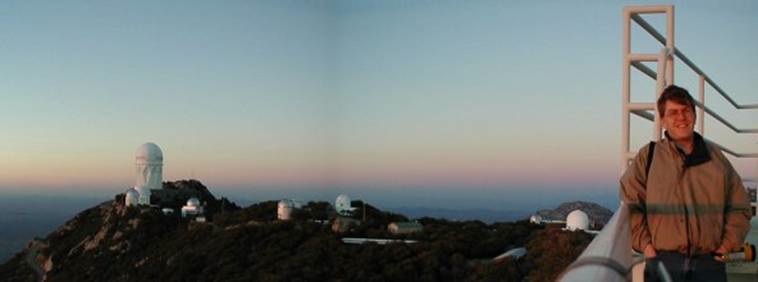
Dr. Kurtis Williams is a new faculty member at Texas A&M University – Commerce. He studied astronomy and physics as an undergraduate at Penn State University, after which he spent a year as a Fulbright Scholar at the Max Planck Institute for Extraterrestrial Physics in Garching, Germany. He earned his doctorate in Astronomy & Astrophysics from the University of California Santa Cruz in 2002. He then was a postdoctoral research at Steward Observatory in the University of Arizona and a National Science Foundation Astronomy & Astrophysics Postdoctoral Fellow at the University of Texas in Austin. His research interests are widely varied, and have included X-ray astronomy, white dwarfs and stellar evolution, gravitational lensing, and galaxy evolution.
Abstract:
White dwarfs are the final state of stellar evolution for the vast majority of stars ever formed, and are ever-cooling remnants of their progenitor star's central nuclear reactor. As such, white dwarfs are an ideal observational probe of the end stages of the stellar life cycle. In this talk, I will first present our latest results in understanding the relationship between white dwarf masses and the masses of their progenitor stars. Second, I will discuss the numerous mysteries surrounding a rare type of white dwarf, those with carbon-dominated atmospheres. Finally, I will outline a new project to determine the age of the thick disk and halo of the Milky Way galaxy using data from a recently-completed survey of the northern sky.
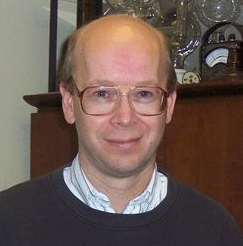 Prof. Mark Holtz received his B.S. in Physics from Bradley University and his Ph.D. in Physics from Virginia Tech. He spent time as a visiting researcher at Max Planck Institute and Michigan State University prior to joining Texas Tech University. Since that time, he has carried out research in solid-state physics and earned promotions from Assistant up to Professor of Physics. During this time he spent summers and semesters at Intel, Corp., Texas Instruments, Inc., and the Army Research Laboratory. He has been the Arts and Sciences director of the TTU Nano Tech Center since 2004. More information about Prof. Holtz and his research can be found at
Prof. Mark Holtz received his B.S. in Physics from Bradley University and his Ph.D. in Physics from Virginia Tech. He spent time as a visiting researcher at Max Planck Institute and Michigan State University prior to joining Texas Tech University. Since that time, he has carried out research in solid-state physics and earned promotions from Assistant up to Professor of Physics. During this time he spent summers and semesters at Intel, Corp., Texas Instruments, Inc., and the Army Research Laboratory. He has been the Arts and Sciences director of the TTU Nano Tech Center since 2004. More information about Prof. Holtz and his research can be found at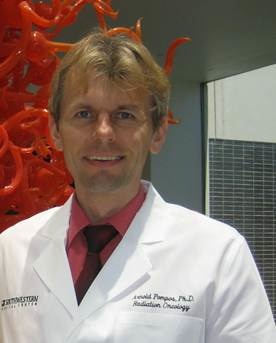
Prof. Arnold Pompoš received his BS in Theoretical Physics from Charles University in Prague, Czech Republic in 1994 and his Ph.D. in experimental high energy physics from Purdue University in 2002. He did postdoctoral research in high energy physics at The University of Oklahoma and his medical physics residency at The University of Nebraska Medical Center. In 2009, Prof. Arnold Pompoš joined the faculty at the University of Texas Southwestern Medical Center in Dallas. His current research interest is in employing Monte Carlo computation and simulation technique to study energy deposition of accelerated carbon ions & energetic photons in tissue, micro-dosimetry on a molecular scale, nuclear activation of the irradiated tissue and its use for imaging, interaction of polarized DNA with polarized free radicals in irradiated tissue and energy deposition of plasma accelerated high energy electrons. More information about Prof. Arnold Pompoš and his research can be found at http://www.utsouthwestern.edu/findfac/professional/0,2356,106823,00.html
Abstract:
Ionizing radiation is dangerous, but if handled with caution, it helps many people to fight their cancer. In Radiation Oncology departments, we deposit energy to tumors via ionizing radiation. This process creates free radicals which then attack the cellular structures and cause cell death. It is challenging to cause tumor cells death only while keeping the healthy cells untouched. This presentation will be about physics of cancer treatment. I will cover the pros and cons of various radiation modalities as well as the research areas we are working on to maximize tumor eradication efficiency.
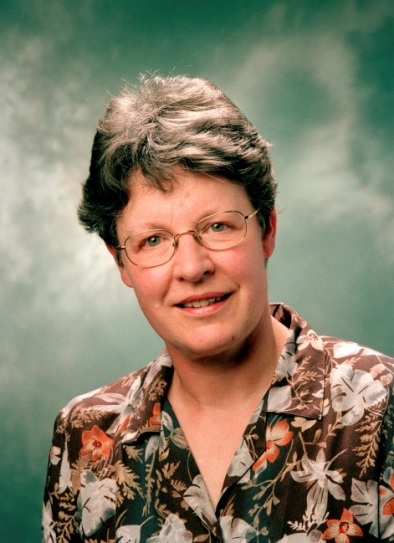 Dr. Jocelyn Bell Burnell (http://en.wikipedia.org/wiki/Jocelyn_Bell_Burnell) is best known for the discovery of pulsars (rotating neutron stars) in 1967 when she was a graduate student at the University of Cambridge in UK – work for which her thesis supervisor Dr. Antony Hewish was awarded a Nobel Prize in 1974. The discovery, considered as the greatest astronomical discovery of the twentieth century by many people, has changed our understanding of stellar evolution and the fundamental make up of matter at extremely high densities. Dr. Bell Burnell is a Fellow of the Royal Society of London and a Foreign Associate of the US National Academy of Sciences. She has been President of the UK’s Royal Astronomical Society and has just completed her term as (the first female) President of the UK/Ireland Institute of Physics. She is currently a Visiting Professor at the University of Oxford and Mansfield College Oxford.
Dr. Jocelyn Bell Burnell (http://en.wikipedia.org/wiki/Jocelyn_Bell_Burnell) is best known for the discovery of pulsars (rotating neutron stars) in 1967 when she was a graduate student at the University of Cambridge in UK – work for which her thesis supervisor Dr. Antony Hewish was awarded a Nobel Prize in 1974. The discovery, considered as the greatest astronomical discovery of the twentieth century by many people, has changed our understanding of stellar evolution and the fundamental make up of matter at extremely high densities. Dr. Bell Burnell is a Fellow of the Royal Society of London and a Foreign Associate of the US National Academy of Sciences. She has been President of the UK’s Royal Astronomical Society and has just completed her term as (the first female) President of the UK/Ireland Institute of Physics. She is currently a Visiting Professor at the University of Oxford and Mansfield College Oxford.
Dr. Bell Burnell will be speaking to several groups during her stay. The public is welcome to attend each of these events free of charge.
Monday, Feb. 28 from 7:30-8:30 pm in the Planetarium Science Building room 125, Dr. Bell Burnell will give a talk on Astronomy and Poetry. The talk will be hosted by Dr. Kathryn Jacobs, Professor of English. As a hobby Dr. Jocelyn Bell Burnell collects poetry with space or astronomy themes, she has recently co-edited an anthology of poetry with an astronomical theme – ‘Dark Matter, Poems of Space’. During this talk she will be presenting poetry under the starry skies of the planetarium.
Tuesday, March 1 from 11:00am-12:00 noon in Innovations A of the Sam Rayburn Student Center, Dr. Bell Burnell will have Discussions with female faculty and students. The event is organized by Dr. Mary Hendrix, Vice President for Student Access and Success. Dr. Bell Burnell is interested in women’s studies. She hopes that her presence as a senior woman in science will encourage more women to consider a career in science. “Dr. Bell Burnell will serve as a tremendous inspiration to our youngsters thinking of entering science and a great motivation for those still uncertain”, said Dr. Allan Headley, Dean of the Graduate School and Research.
Tuesday, March 1 from 7:20-8:20 pm in room 214 of the Distance Education Center in the Agriculture-Industry Technology building, Dr. Bell Burnell will give a talk on A Reflection on the discovery of pulsars to the graduate class Physics 561: Astronomy Problems. The lecture is delivered via two-way video to TAMU-Commerce Metroplex Center at 2600 Motley Drive, Mesquite, Texas 75150.
Wednesday, March 2 from 4-5 pm in Science Building room 127, Dr. Bell Burnell will give a talk on Will the world end in 2012? The astronomical evidence. This talk will be hosted by Dr. Kent Montgomery, Director of the Planetarium. A reception in her honor will be held from 3:30-4:00pm in the lobby of the Planetarium, everyone is invited. What's all this about the end of the world in 2012? Just what is meant to happen, and how likely is it to happen? This talk examines the threats from space and explains how much truth there is in the suggestions that killer asteroids, lethal solar flares or the black hole at the center of the Milky Way (for example) could cause the end of the Earth.
Thursday, March 3 from 4-5 pm in Science Building room 127, Dr. Bell Burnell will give a physics and astronomy colloquium on Pulsars and extreme physics. This is an overview of the current state of our knowledge about Pulsars. The colloquium will be hosted by Dr. William G. Newton, a nuclear astrophysicist.
UK and US universities and learned bodies have presented Dr. Bell with many awards including the 2010 Faraday Medal of the Royal Society of London, the Albert Michelson Medal of the Franklin Institute of Philadelphia, the J. Robert Oppenheimer Memorial Prize of the Center for Theoretical Studies in Miami, the Beatrice M. Tinsley Prize of the American Astronomical Society and the Herschel Medal of the Royal Astronomical Society. Dr. Bell Burnell received a Commander of the Order of the British Empire (CBE) from Queen Elizabeth II in 1999 and was promoted to Dame Commander of the Order of the British Empire (DBE) in June 2007.
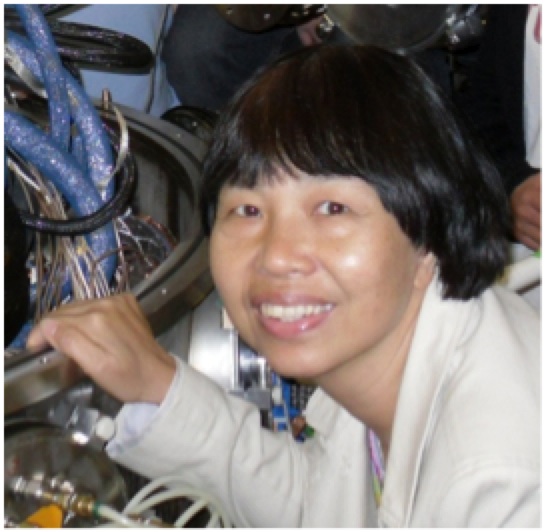 Betty Tsang is a professor at the National Superconducting Cyclotron Laboratory at Michigan State University. She received her PhD in Nuclear Chemistry at the University of Washington, Seattle. After graduation, she worked as a postdoctoral fellow at the NSCL and has been working there since 1980. She is a fellow of the American Physical Society and received the Heinz R. Pagels Human Rights award in 2000. Betty Tsang’s current research interests include experimental investigation of the density dependence of the symmetry energy and the study of nucleon-nucleon correlations in exotic nuclei. More information of her research can be found at http://www.nscl.msu.edu/~tsang/
Betty Tsang is a professor at the National Superconducting Cyclotron Laboratory at Michigan State University. She received her PhD in Nuclear Chemistry at the University of Washington, Seattle. After graduation, she worked as a postdoctoral fellow at the NSCL and has been working there since 1980. She is a fellow of the American Physical Society and received the Heinz R. Pagels Human Rights award in 2000. Betty Tsang’s current research interests include experimental investigation of the density dependence of the symmetry energy and the study of nucleon-nucleon correlations in exotic nuclei. More information of her research can be found at http://www.nscl.msu.edu/~tsang/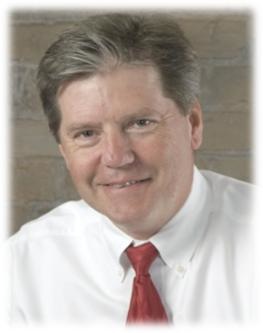 Prof. Wolfgang Bauer was born in Germany and obtained his Ph.D. in theoretical nuclear physics from the University of Giessen in 1987. After a post-doctoral fellowship at the California Institute of Technology, he joined the faculty at Michigan State University in 1988 and became a University Distinguished Professor there in 2007. He has worked on a large variety of topics in computational sciences, from high-temperature superconductivity and supernova explosions to biophysics, but has been especially interested in relativistic nuclear collisions. He is probably best known for his work on phase transitions of nuclear matter in heavy ion collisions. In recent years, Dr. Bauer has focused much of his research and teaching on issues concerning energy, including fossil fuel resources, ways to use energy more efficiently, and, in particular, alternative and carbon-neutral energy resources. He has been serving as the chairperson of the Department of Physics and Astronomy at MSU since 2001, as well as the founding Director of the Institute for Cyber-Enabled Research since 2009. More information about Prof. Wolfgang Bauer and his research can be found at http://www.pa.msu.edu/~bauer/
Prof. Wolfgang Bauer was born in Germany and obtained his Ph.D. in theoretical nuclear physics from the University of Giessen in 1987. After a post-doctoral fellowship at the California Institute of Technology, he joined the faculty at Michigan State University in 1988 and became a University Distinguished Professor there in 2007. He has worked on a large variety of topics in computational sciences, from high-temperature superconductivity and supernova explosions to biophysics, but has been especially interested in relativistic nuclear collisions. He is probably best known for his work on phase transitions of nuclear matter in heavy ion collisions. In recent years, Dr. Bauer has focused much of his research and teaching on issues concerning energy, including fossil fuel resources, ways to use energy more efficiently, and, in particular, alternative and carbon-neutral energy resources. He has been serving as the chairperson of the Department of Physics and Astronomy at MSU since 2001, as well as the founding Director of the Institute for Cyber-Enabled Research since 2009. More information about Prof. Wolfgang Bauer and his research can be found at http://www.pa.msu.edu/~bauer/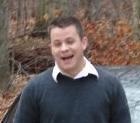 Dr. Ian Bentley received his BS in physics with Astrophysics Option from New Mexico Tech in 2004 and his Ph.D from the University of Notre Dame in May 2010 under the guidance of Prof. Stefan Frauendorf. He is currently a postdoctoral associate at Notre Dame and an adjunct assistant professor at the Department of Physics and Astronomy at Indiana University South Bend.
Dr. Ian Bentley received his BS in physics with Astrophysics Option from New Mexico Tech in 2004 and his Ph.D from the University of Notre Dame in May 2010 under the guidance of Prof. Stefan Frauendorf. He is currently a postdoctoral associate at Notre Dame and an adjunct assistant professor at the Department of Physics and Astronomy at Indiana University South Bend. 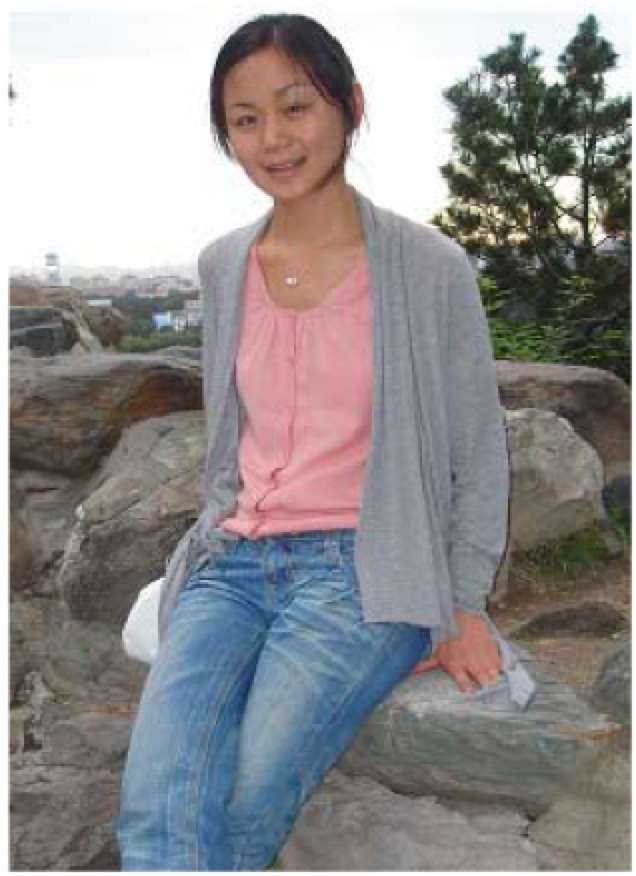 Dr. Ang Li received her Ph.D in nuclear theory from Lanzhou University in 2007.
Dr. Ang Li received her Ph.D in nuclear theory from Lanzhou University in 2007. 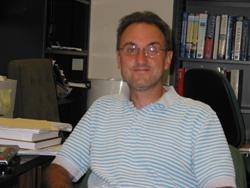 Dr. Lorenzo Brancaleon received his Laurea Degree in Physics from the University of Parma in 1991 with the thesis entitled “Development of a Photoacoustic Calorimetry Instrument for the Investigation of Biomolecules”. In 1997 he received his PhD in Physics from the same University with a dissertation entitled “Photophysics of Tryptophan and Tryptophan-containing peptides”. From 1996 to 1998, he was a Research Associate at the Steacie Institute for Molecular Sciences of the National Research Council in Ottawa (Canada). From 1998 to 2000 he was an Assistant in Physics at the Massachusetts General Hospital and an Instructor at Harvard Medical School in Boston, MA. From 2000 to 2003 he was appointed as Photophysicist at the Scottish Photodynamic Therapy Center and the Photobiology Unit of Ninewells Hospital in Dundee (UK). During the same period he was a honorary lecturer at the University of Dundee and the University of St. Andrews (UK). In September of 2003 he joined the faculty at the Department of Physics and Astronomy at The University of Texas at San Antonio (UTSA). He is currently Associate Professor and Chair of the Graduate Program in Physics at UTSA. Dr. Brancaleon career has developed in and around the field of Molecular Biophysics. His investigations are currently centered around two main research lines (i) the conformational effects of photoactive dyes on proteins and (ii) the properties of biomolecules at the interface with ferroelectric thin oxide films. He has 34 peer reviewed manuscripts and over 40 presentation at international conferences. His group has an excellent reputation for undergraduate and graduate research training especially those of underrepresented groups.
Dr. Lorenzo Brancaleon received his Laurea Degree in Physics from the University of Parma in 1991 with the thesis entitled “Development of a Photoacoustic Calorimetry Instrument for the Investigation of Biomolecules”. In 1997 he received his PhD in Physics from the same University with a dissertation entitled “Photophysics of Tryptophan and Tryptophan-containing peptides”. From 1996 to 1998, he was a Research Associate at the Steacie Institute for Molecular Sciences of the National Research Council in Ottawa (Canada). From 1998 to 2000 he was an Assistant in Physics at the Massachusetts General Hospital and an Instructor at Harvard Medical School in Boston, MA. From 2000 to 2003 he was appointed as Photophysicist at the Scottish Photodynamic Therapy Center and the Photobiology Unit of Ninewells Hospital in Dundee (UK). During the same period he was a honorary lecturer at the University of Dundee and the University of St. Andrews (UK). In September of 2003 he joined the faculty at the Department of Physics and Astronomy at The University of Texas at San Antonio (UTSA). He is currently Associate Professor and Chair of the Graduate Program in Physics at UTSA. Dr. Brancaleon career has developed in and around the field of Molecular Biophysics. His investigations are currently centered around two main research lines (i) the conformational effects of photoactive dyes on proteins and (ii) the properties of biomolecules at the interface with ferroelectric thin oxide films. He has 34 peer reviewed manuscripts and over 40 presentation at international conferences. His group has an excellent reputation for undergraduate and graduate research training especially those of underrepresented groups.  Professor Ko received a B.Sc. degree from Tunghai University in Taiwan, a M.Sc. degree from McMaster University in Canada, and a Ph.D. from the State University of New York at Stony Brook. Before joining the Texas A&M faculty in 1980, he did research work at McMaster University, Max-Planck Institute for Nuclear Research, Michigan State University, and Lawrence Berkeley Laboratory. He received the Alexander von Humboldt Senior Distinguished Scientist Award in 1995 and the Texas A&M Association of Former Students Distinguished Research Award in 2004, and he is a Fellow of the American Physical Society. Currently, his research interests include theoretical studies of 1) nuclear symmetry energy effects in heavy ion collisions with rare isotopes, 2) signals and properties of the quark-gluon plasma in relativistic heavy ion collisions, and 3) particle production in hadronic reactions. His publications can be found in SPIRES <http://inspirehep.net/author/profile/C.M.Ko.2> . His research is supported by the National Science Foundation and the Robert A. Welch Foundation.
Professor Ko received a B.Sc. degree from Tunghai University in Taiwan, a M.Sc. degree from McMaster University in Canada, and a Ph.D. from the State University of New York at Stony Brook. Before joining the Texas A&M faculty in 1980, he did research work at McMaster University, Max-Planck Institute for Nuclear Research, Michigan State University, and Lawrence Berkeley Laboratory. He received the Alexander von Humboldt Senior Distinguished Scientist Award in 1995 and the Texas A&M Association of Former Students Distinguished Research Award in 2004, and he is a Fellow of the American Physical Society. Currently, his research interests include theoretical studies of 1) nuclear symmetry energy effects in heavy ion collisions with rare isotopes, 2) signals and properties of the quark-gluon plasma in relativistic heavy ion collisions, and 3) particle production in hadronic reactions. His publications can be found in SPIRES <http://inspirehep.net/author/profile/C.M.Ko.2> . His research is supported by the National Science Foundation and the Robert A. Welch Foundation. 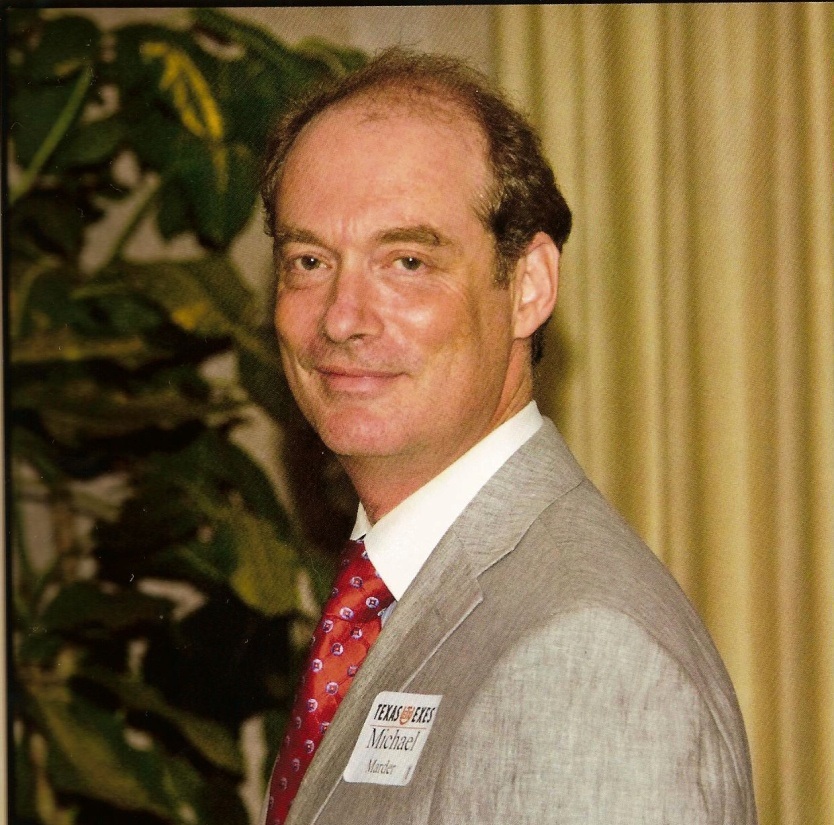 Prof. Michael Marder is a member of the Center for Nonlinear Dynamics, internationally known for its experiments on chaos and pattern formation, and for many years ranked #1 in the nation by US News and World Report. He is involved in a wide variety of theoretical, numerical, and experimental investigations. He specializes in the mechanics of solids, particularly the fracture of brittle materials. He has developed numerical methods allowing fracture computations on the atomic scale to be compared directly with laboratory experiments on a macroscopic scale. He is currently investigating fracture and deformation of polymeric materials. As Associate Dean for Science and Mathematics Education in the College of Natural Sciences, Michael Marder is co-director of UTeach, the University program for preparation of secondary mathematics and science teachers, is helping to introduce active learning techniques into undergraduate teaching, and helps oversee the national expansion of UTeach.
Prof. Michael Marder is a member of the Center for Nonlinear Dynamics, internationally known for its experiments on chaos and pattern formation, and for many years ranked #1 in the nation by US News and World Report. He is involved in a wide variety of theoretical, numerical, and experimental investigations. He specializes in the mechanics of solids, particularly the fracture of brittle materials. He has developed numerical methods allowing fracture computations on the atomic scale to be compared directly with laboratory experiments on a macroscopic scale. He is currently investigating fracture and deformation of polymeric materials. As Associate Dean for Science and Mathematics Education in the College of Natural Sciences, Michael Marder is co-director of UTeach, the University program for preparation of secondary mathematics and science teachers, is helping to introduce active learning techniques into undergraduate teaching, and helps oversee the national expansion of UTeach. 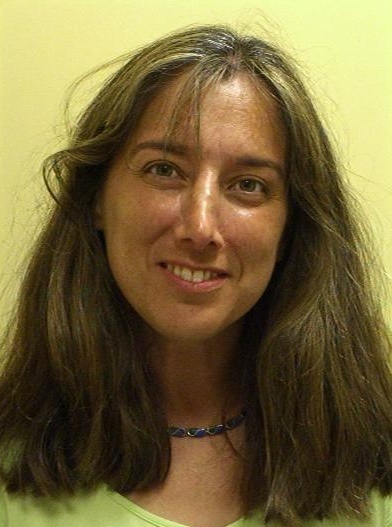 Dr. Ann Zabludoff is currently an Associate Professor of Astronomy and Associate Astronomer at the University of Arizona's Steward Observatory. She is a graduate of the Massachusetts Institute of Technology (S.B. in Physics, S.B. in Mathematics) and Harvard University (Ph.D. in Astronomy). Before joining the faculty at University of Arizona, she was a Carnegie Post-Doctoral Fellow at the Observatories of the Carnegie Institution in Pasadena, CA and a Hubble Post-Doctoral Fellow at the University of California, Santa Cruz. Her work focuses on questions of galaxy formation and evolution, the evolution of large-scale structure, and the distribution and nature of dark matter. More information about Prof. Zabludoff and her research can be found at http://atropos.as.arizona.edu/aiz/Home.html .
Dr. Ann Zabludoff is currently an Associate Professor of Astronomy and Associate Astronomer at the University of Arizona's Steward Observatory. She is a graduate of the Massachusetts Institute of Technology (S.B. in Physics, S.B. in Mathematics) and Harvard University (Ph.D. in Astronomy). Before joining the faculty at University of Arizona, she was a Carnegie Post-Doctoral Fellow at the Observatories of the Carnegie Institution in Pasadena, CA and a Hubble Post-Doctoral Fellow at the University of California, Santa Cruz. Her work focuses on questions of galaxy formation and evolution, the evolution of large-scale structure, and the distribution and nature of dark matter. More information about Prof. Zabludoff and her research can be found at http://atropos.as.arizona.edu/aiz/Home.html .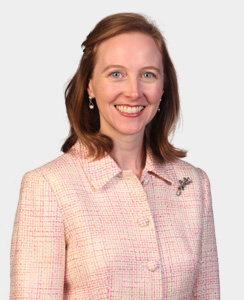 Dr. Lorin Matthews graduated from Baylor University with a B.S. and Ph.D. in Physics in 1994 and 1998, respectively. She worked for Raytheon Aircraft Integration Systems from 1998-2000 in the Flight Sciences Department, where she was the lead vibroacoustics analyst on projects such as NASA's SOFIA (Stratospheric Observatory for Infrared Astronomy). In 2000, she joined the faculty at Baylor University where she is an assistant professor of physics and Associate Director of CASPER, the Center for Astrophysics, Space Physics, and Engineering Research.. Her areas of research include theoretical and experimental complex plasmas as well as hypervelocity impact studies. Her theoretical research focuses on numerical simulation of N-body systems in complex plasmas, including fractal aggregation of micron-sized dust in protoplanetary disks, the dynamics of Saturn’s F Ring, and dynamics of dust crystals. Her experimental research in complex plasmas is concerned with dynamics, stability, and phase changes in dust crystals, coulomb clusters, and dust strings.
Dr. Lorin Matthews graduated from Baylor University with a B.S. and Ph.D. in Physics in 1994 and 1998, respectively. She worked for Raytheon Aircraft Integration Systems from 1998-2000 in the Flight Sciences Department, where she was the lead vibroacoustics analyst on projects such as NASA's SOFIA (Stratospheric Observatory for Infrared Astronomy). In 2000, she joined the faculty at Baylor University where she is an assistant professor of physics and Associate Director of CASPER, the Center for Astrophysics, Space Physics, and Engineering Research.. Her areas of research include theoretical and experimental complex plasmas as well as hypervelocity impact studies. Her theoretical research focuses on numerical simulation of N-body systems in complex plasmas, including fractal aggregation of micron-sized dust in protoplanetary disks, the dynamics of Saturn’s F Ring, and dynamics of dust crystals. Her experimental research in complex plasmas is concerned with dynamics, stability, and phase changes in dust crystals, coulomb clusters, and dust strings.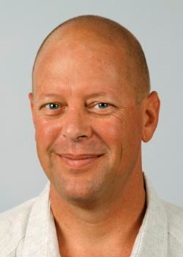 Dr. Frank Timmes is a Professor in, and Associate Director of, the School of Earth and Space Exploration (SESE) at Arizona State University (ASU). He is also Director of the High Performance Computing Institute at ASU, and a Scientific Editor for the Astrophysical Journal. Frank's research interests include supernovae, with emphasis on their progenitor evolution, explosion, nucleosynthesis, and spectra; cosmic chemical evolution, the evolution of every isotope at every point in spacetime; gamma-ray astronomy, particularly from radioactive isotopes; high performance computing, with an accent on multi-scale, multi-physics fluid flows; and astrobiology, with attention to creation and delivery of bioessential elements to habitable planets. More information about Prof. Frank Timmes and his research can be found at http://sese.asu.edu/person/frank-timmes
Dr. Frank Timmes is a Professor in, and Associate Director of, the School of Earth and Space Exploration (SESE) at Arizona State University (ASU). He is also Director of the High Performance Computing Institute at ASU, and a Scientific Editor for the Astrophysical Journal. Frank's research interests include supernovae, with emphasis on their progenitor evolution, explosion, nucleosynthesis, and spectra; cosmic chemical evolution, the evolution of every isotope at every point in spacetime; gamma-ray astronomy, particularly from radioactive isotopes; high performance computing, with an accent on multi-scale, multi-physics fluid flows; and astrobiology, with attention to creation and delivery of bioessential elements to habitable planets. More information about Prof. Frank Timmes and his research can be found at http://sese.asu.edu/person/frank-timmesTo request a change to this page or to request access to make changes yourself, email helpdesk@etamu.edu.

